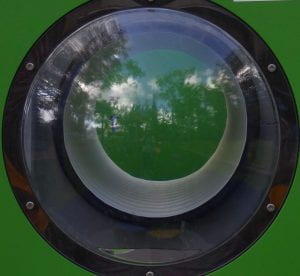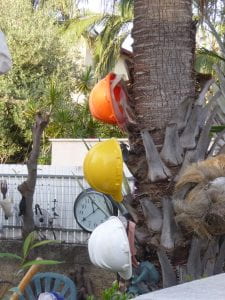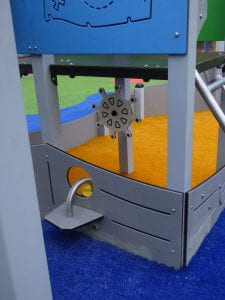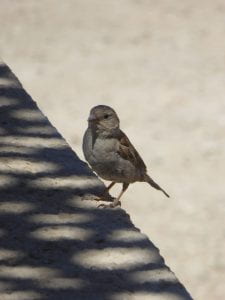
Big waves coming right at you can be very scary.
Waves don’t tend to wait for you to plan, get ready, or even try a practice run, before making it crystal clear that you had better start swimming, NOW. OR ELSE.
I felt like the little sandpiper in the video (see below) facing the big wave when the Covid-19 virus first hit the country and the school system. Needless to say, I had not been really prepared for such a scenario, transitioning so quickly to complete distance learning with my Deaf and hard of hearing high-school students. It was quite a jolt, to put it mildly.
I don’t want to feel that way again.

I’ve been told that one can’t prepare for the unknown, as none of us imagined preparing for a lockdown or for returning to school with masks and partial student attendance.
I’ve been told that since the unknown includes possibilities ranging from no distance learning at all to long periods of it, or some combination of partial F-2-F learning in small groups, it is futile to try to plan ahead.
In short, nobody knows what kind of wave will hit the school system in the future, when it will hit and how big its impact will be.
However, now that the school year is winding down (we’re in the exam- mode-only now in high-school) I feel that I have learned some useful things over the past months.
Like the little sandpiper in the video, while I can’t face down the big wave, I believe that by identifying the problems I was faced with and asking myself what can be done about them, I will find footholds to help me find my way under an unknown next wave. It’s not unrealistic at all to imagine that that whatever does come, distance learning will be the first thing the school system returns to.
The best place to start is always from you know, right?
So…

Naomi’s Photos
My first, most immediate problem was that my students did not have their books and notebooks with them at home– these are all kept in several boxes in the English Room!
I’m putting an end to that practice, even though I’ve been doing it for years and have found it to be useful with students in Special Education. Not only is it bad for sudden shifts to distance learning, but it is also not a good idea these days to have students handling other students’ books and notebooks as they rummage through the relevant boxes to pull out their personal ones.
Getting rid of the “book boxes” will bring back the problem of what to do when a student comes to class without his/her materials.
HOWEVER…
That is already a much smaller, identifiable problem that I can prepare for. Particularly as I am already in the process of learning how to expand my use of a “virtual notebook”, based on what I began doing during the distance learning. For the short time that we were back at school after “lockdown”, some students simply continued using the online notebooks while in class which made the transition between home and class much easier, at least in regards to notebooks. More information on my version of online virtual notebooks in an upcoming post.
Even if I make no meaningful progress dealing with any other issue except the one described above, I will be better prepared for what may come when the next school year begins.

Naomi’s Photos
The much more complex problem I had during distance learning had to do with those students who did not participate in the distance learning at all or did so extremely infrequently and inconsistently. The reasons for this lack of participation, to the best of my knowledge, are varied. I know of some, particularly girls, who took on the role of caring for the home and younger siblings. Other students come from homes where no one cares if they completely turn night into day and exclude themselves from all school-based activities (it’s worth noting that our high-school only began the virtual school day at 11:30 a.m, three and a half hours later than usual!).
These are not problems to be solved by preparing new materials or adding even more scaffolding to existing materials, which is my usual mode of action – these students aren’t coming to “the table” so what’s on “the table” isn’t the issue. So how do I even approach such issues?

Writing this blog post has helped me focus my thoughts. Again, the place to start is to examine what is it I know and what I am able to find out.
The 12th graders just graduated. I haven’t met the new 10th graders yet.
But I DO know the students who will be my new 11th and 12th graders – these are the same students who experienced distance learning during a lockdown for the first time along with me!
So it seems that a good place to start is by creating a table with the following temporary titles for each column:
- Name of Student (who did not participate)
- Homeroom teacher’s preference (should I just update absences on the school system or does he/she want updates regarding attendance the same day?)
- Is contacting the parents a viable option (with my students, sometimes it isn’t)
- Have I had the opportunity to talk to the student Face -2- Face about the situation yet?
- Any insights from teachers of other subjects who teach this student?
Have I missed something?
Most likely I have.
But I certainly feel that now I know where to begin finding footholds, even under a wave.
It’s a good feeling.
Now watch the video!


